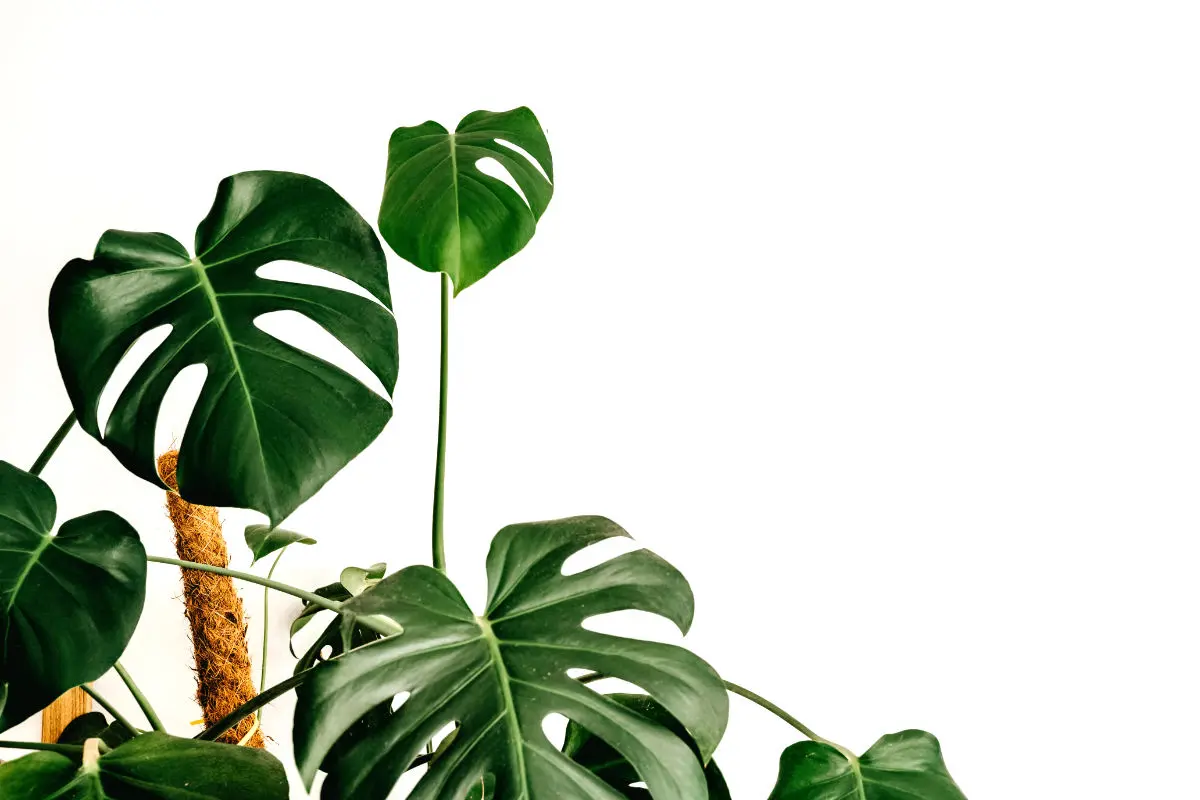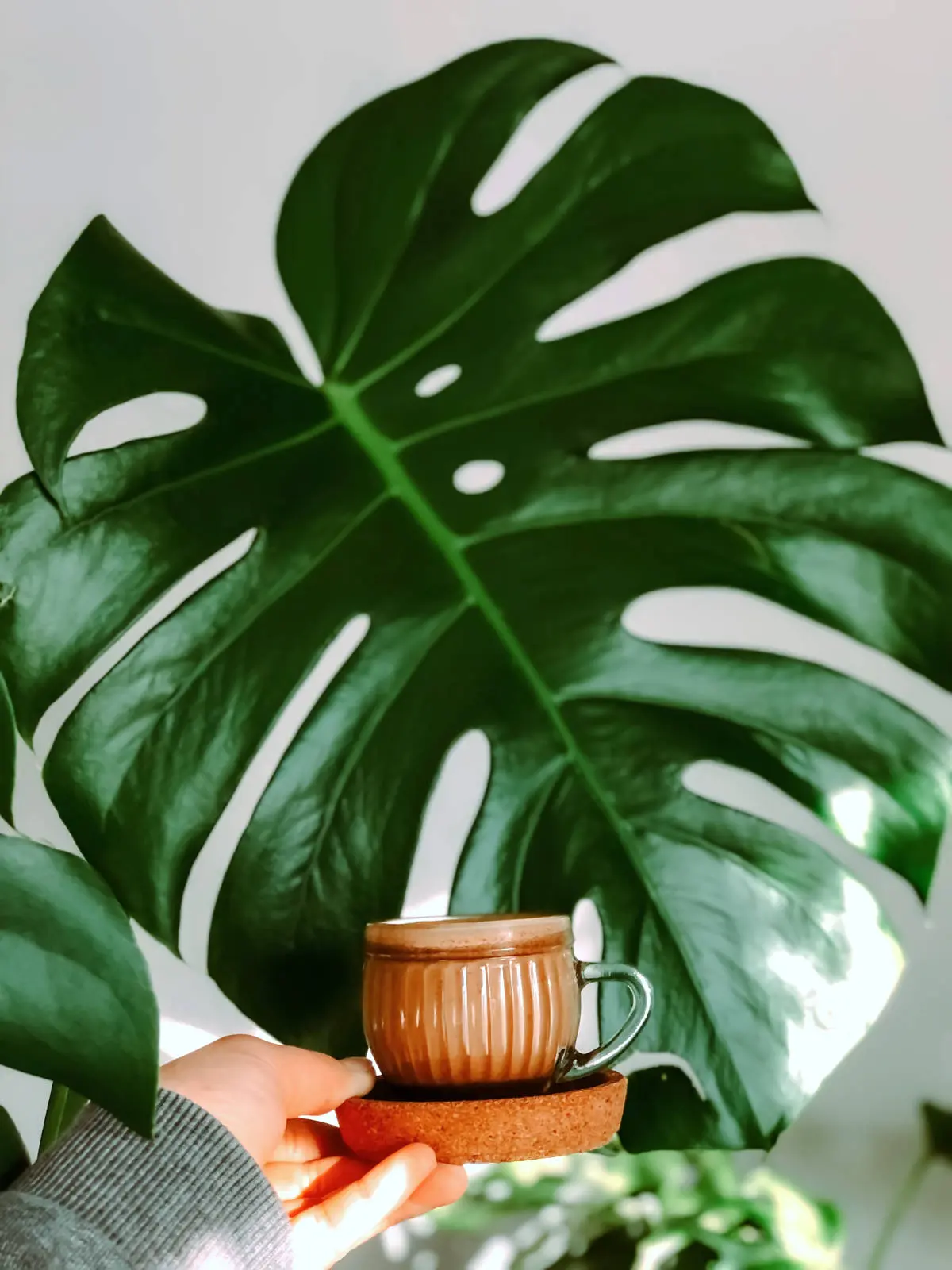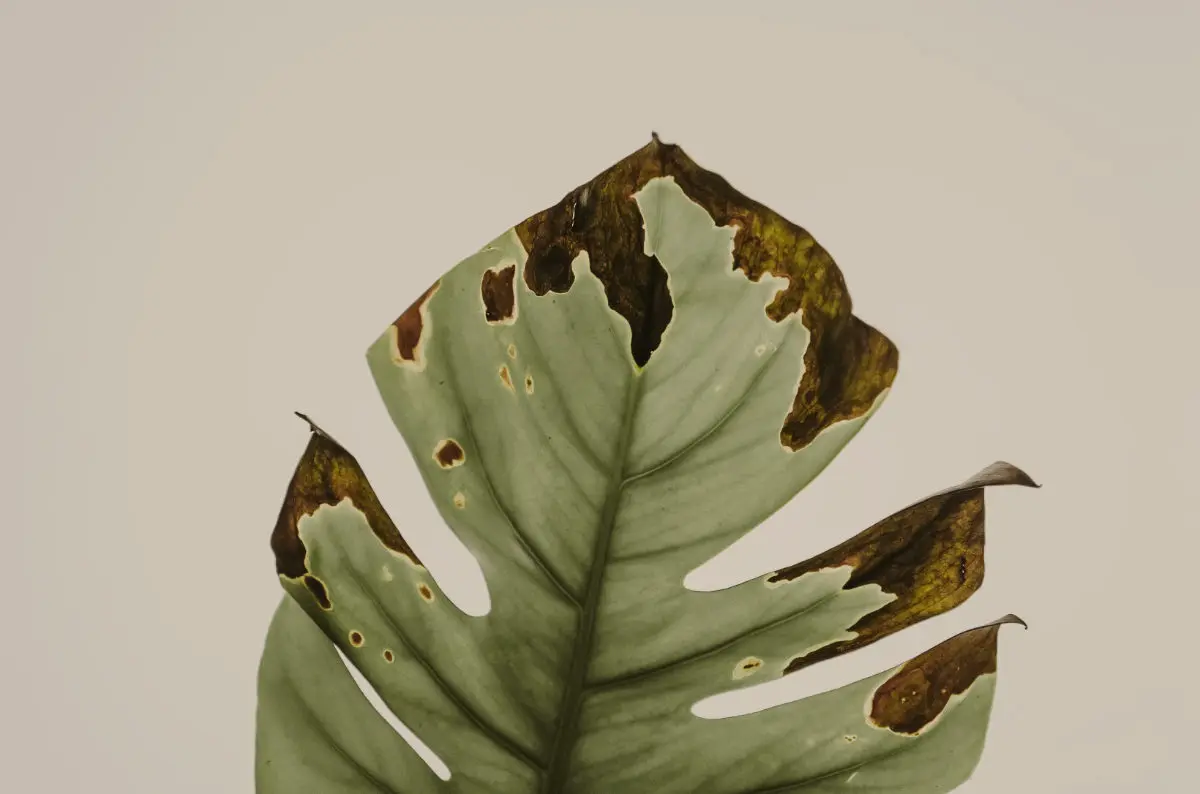The Ultimate Guide to Growing Monstera Plants Near Radiators
Is it safe to place your Monstera plant near a radiator? Discover the effects of radiator heat on your monstera plant and learn how to care for it in such conditions properly.
By Tobias Holm
Are you a plant lover who can't resist the allure of a beautiful Monstera plant? If so, you may be wondering whether it's possible to grow these lush beauties near radiators. Well, you're in luck! In this ultimate guide, we'll explore everything you need to know about growing Monstera plants near radiators and how to ensure their health and vitality.
Monstera plants, with their iconic tropical leaves, have become increasingly popular in interior design. They bring a touch of the outdoors inside, adding a stylish and vibrant atmosphere to any space. However, the heat produced by radiators can pose a challenge to their well-being.
In this comprehensive guide, we'll delve into the potential risks and rewards of growing Monstera plants close to radiators. From understanding the impact of heat on plant growth to implementing smart strategies to keep your plants thriving, we've got you covered. Whether you're a beginner or a seasoned plant parent, our tips and insights will help you create a cozy and nurturing environment for your Monstera plants, even in the presence of radiators.
So, let's embark on this green adventure and learn how to grow Monstera plants near radiators the right way!
Understanding the impact of radiators on Monstera plants
Radiators are a common source of heat in many homes, providing warmth during the colder months. While this is great for creating a cozy environment, it's important to understand how this heat can affect your Monstera plants. One of the major concerns is that the heat from radiators can cause the air to become dry, which can lead to dehydration for your plants.
When the air is dry, the moisture in the soil evaporates at a faster rate, which means your Monstera plant may need more frequent watering. Additionally, the dry air can cause the leaves of your plant to lose moisture, leading to leaf curling or browning. It's essential to monitor the humidity levels near your radiators to ensure your Monstera plants receive the moisture they need.
Another potential issue is the temperature fluctuations that can occur near radiators. Radiators can produce intense heat, causing the immediate area to become warmer than the rest of the room. This sudden change in temperature can stress your plants, making them more susceptible to pests and diseases. It's crucial to find a balance that provides warmth without subjecting your Monstera plants to extreme temperature changes.
Factors to consider before placing Monstera plants near radiators
Before you decide to place your Monstera plants near radiators, there are a few factors you should consider. First and foremost, assess the specific conditions of your radiator and the surrounding area. Is the radiator particularly hot? Does it produce consistent heat, or does it fluctuate? Understanding these factors will help you determine whether it's a suitable location for your Monstera plants.
Additionally, consider the size and maturity of your Monstera plant. Smaller, younger plants may be more sensitive to heat and require extra care. It's also important to evaluate the humidity levels in your home. If the air is already dry, placing your Monstera near a radiator may exacerbate the issue. In such cases, you may need to take additional measures to maintain proper humidity levels, which we'll discuss later in this guide.
Another factor to consider is the placement of your radiator within the room. If the radiator is located in a drafty area or near a window, it may create temperature fluctuations that can harm your plants. On the other hand, if the radiator is positioned away from drafts and insulated properly, it can provide a stable source of heat that your Monstera plants will appreciate.
Choosing the right location for your Monstera plant
When it comes to growing Monstera plants near radiators, choosing the right location is crucial. Ideally, you want to find a spot that balances the warmth from the radiator with other environmental factors that promote healthy plant growth.
Here are a few considerations to keep in mind when selecting a location for your Monstera plant:
- Proximity to the radiator: While you want your Monstera plant to benefit from the warmth of the radiator, you don't want it to be too close. Aim for a distance of at least a few feet to avoid exposing your plant to excessive heat.
- Indirect light: Monstera plants thrive in bright, indirect light. Position your plant near a window or in a well-lit area, taking care to ensure it doesn't receive direct sunlight. Direct sunlight can lead to sunburned leaves, especially when combined with the heat from the radiator.
- Avoid drafts: As mentioned earlier, drafts can cause temperature fluctuations that can be harmful to your Monstera plant. Keep your plant away from windows, doors, or any other sources of drafts.
By considering these factors, you can create an optimal location for your Monstera plant near a radiator, providing it with the warmth it needs while minimizing the risks associated with heat and temperature fluctuations.
Tips for maintaining proper humidity levels near radiators
As we mentioned earlier, radiators can cause the air to become dry, which can negatively impact your Monstera plants. To maintain proper humidity levels near radiators, consider implementing the following tips:
- Use a humidifier: Investing in a humidifier can help increase the moisture in the air, benefiting both your Monstera plant and your overall indoor air quality. Place the humidifier near your plant to ensure it receives the necessary humidity.
- Mist your plant: Regularly misting your Monstera plant can provide a temporary boost of humidity. Use a spray bottle to mist the leaves and surrounding air. Avoid misting directly on the leaves if they are exposed to direct sunlight, as this can lead to leaf burn.
- Group plants together: Grouping your Monstera plant with other houseplants can create a microclimate that helps retain moisture. Plants release moisture through a process called transpiration, and when grouped together, they can create a more humid environment.
Remember to monitor the humidity levels in your home regularly, as they can fluctuate depending on the season and other environmental factors. Adjust your humidifier or misting routine accordingly to ensure your Monstera plant receives the ideal humidity levels for its growth.
Watering your Monstera plant near radiators
Watering your Monstera plant near radiators require some special attention. The heat from radiators can affect the moisture levels in the soil, making it crucial to adjust your watering routine accordingly.
Here are some tips to help you keep your Monstera plant well-hydrated and nourished:
- Monitor soil moisture: Check the moisture level of the soil regularly by sticking your finger about an inch into the soil. If it feels dry, it's time to water your Monstera plant. However, be cautious not to overwater, as this can lead to root rot. Ensure that the pot has proper drainage to prevent water from sitting in the bottom.
- Water quality: The quality of the water you use can also impact your Monstera plant's health. Radiators can contribute to mineral buildup in the water, so it's advisable to use filtered or distilled water. If filtered water is not an option, allow tap water to sit overnight to allow chlorine and other chemicals to dissipate before using it.
- Fertilizer application: Providing your Monstera plant with the right nutrients is essential for its growth. During the active growing season, which is typically spring and summer, feed your plant with a balanced fertilizer. Follow the instructions on the fertilizer packaging to ensure you're using the correct dosage. Be mindful not to over-fertilize, as this can lead to fertilizer burn.
- Adjust watering frequency: The dry air near radiators can cause the soil to dry out more quickly. As a result, you may need to adjust your watering frequency and water your Monstera plant more often. However, always rely on the moisture level of the soil rather than a fixed schedule.
By paying close attention to your Monstera plant's watering and feeding needs, you can ensure it receives the necessary moisture and nutrients to thrive, even in the presence of radiators.
Common problems and solutions for Monstera plants near radiators
Growing Monstera plants near radiators can present some common problems. However, with proper care and attention, these issues can be resolved.
Here are some common problems you may encounter and their solutions:
- Leaf curling: If you notice your Monstera plant's leaves curling, it may be a sign of low humidity. Increase humidity levels by using a humidifier, misting the leaves, or grouping your plants together. Avoid placing your plant directly in the path of hot air blowing from the radiator.
- Leaf browning: Browning leaves can be caused by both low humidity and excessive heat. Monitor the humidity levels and adjust as needed. If the radiator is producing too much heat, consider moving your Monstera plant further away or insulating the area between the radiator and the plant.
- Pest infestation: The dry air near radiators can attract pests such as spider mites. Regularly inspect your plants for signs of pests and take appropriate measures to eliminate them. You can use insecticidal soap or neem oil to control infestations.
- Temperature stress: Sudden temperature fluctuations can stress your Monstera plant, making it more susceptible to diseases. Ensure that your radiator is properly insulated to minimize temperature changes. If necessary, use a thermometer to monitor the temperature near your plant and make adjustments accordingly.
Remember to regularly inspect your Monstera plant for any signs of distress or problems. Catching issues early on can help prevent them from escalating and ensure the long-term health of your plant.
Pruning and propagating Monstera plants near radiators
Pruning and propagating your Monstera plant near radiators can help maintain its health and promote new growth. Here are some tips to guide you through the process:
- Pruning: Regular pruning helps control the size and shape of your Monstera plant. It also allows you to remove any diseased or damaged leaves. When pruning, use clean, sharp pruning shears and make clean cuts just above a leaf node. This encourages new growth and prevents the plant from becoming leggy.
- Propagation: Propagating your Monstera plant near radiators can be a rewarding experience. One popular method of propagation is through stem cuttings. Select a healthy stem with at least one node, and make a clean cut just below the node. Place the cutting in water or a well-draining potting mix, and keep it in a warm, humid environment. Within a few weeks, roots should start to develop, indicating successful propagation.
By regularly pruning your Monstera plant and propagating new plants, you can not only maintain the health and appearance of your current plant but also expand your Monstera collection.
Alternative options for growing Monstera plants in warm environments
If you live in a particularly warm environment or have radiators that generate excessive heat, you may need to explore alternative options for growing Monstera plants. Here are a few alternatives to consider:
- Move to a cooler location: If possible, move your Monstera plant to a cooler area of your home, away from the direct heat of radiators. Choose a spot with consistent temperatures and indirect light to ensure your plant thrives.
- Use a plant stand: Elevating your Monstera plant using a plant stand can help create some distance between the radiator and the plant. This can help reduce the impact of direct heat and temperature fluctuations.
- Install a heat shield: If moving your Monstera plant is not an option, consider installing a heat shield between the radiator and the plant. This can help redirect the heat away from the plant, protecting it from excessive temperature changes.
- Opt for other plant species: If all else fails, consider exploring other plant species that are better suited to warm environments. There are plenty of tropical plants available that thrive in higher temperatures and can still provide a similar aesthetic to Monstera plants.
Remember, it's essential to prioritize the health and well-being of your Monstera plants. If the environment near your radiators is consistently too hot or poses too many challenges, it may be best to explore other options for your plant's growth.
Conclusion and final thoughts
Growing Monstera plants near radiators can be a challenging but rewarding endeavor. By understanding the impact of radiators on your plants, considering various factors before placement, and implementing smart strategies, you can create an environment that promotes the health and vitality of your Monstera plants.
Remember to monitor humidity levels, adjust watering and fertilizer routines, and address any common problems that may arise. Pruning and propagating your Monstera plants can help maintain their health and promote new growth. And if your radiators generate excessive heat, exploring alternative options or plant species may be necessary.
With proper care and attention, you can successfully grow Monstera plants near radiators, adding a touch of tropical beauty to your home while maintaining a cozy atmosphere.
Thank you for joining us on this green adventure of growing Monstera plants near radiators. We hope this ultimate guide has provided you with valuable insights and tips to create a nurturing environment for your Monstera plants.
Happy growing.



